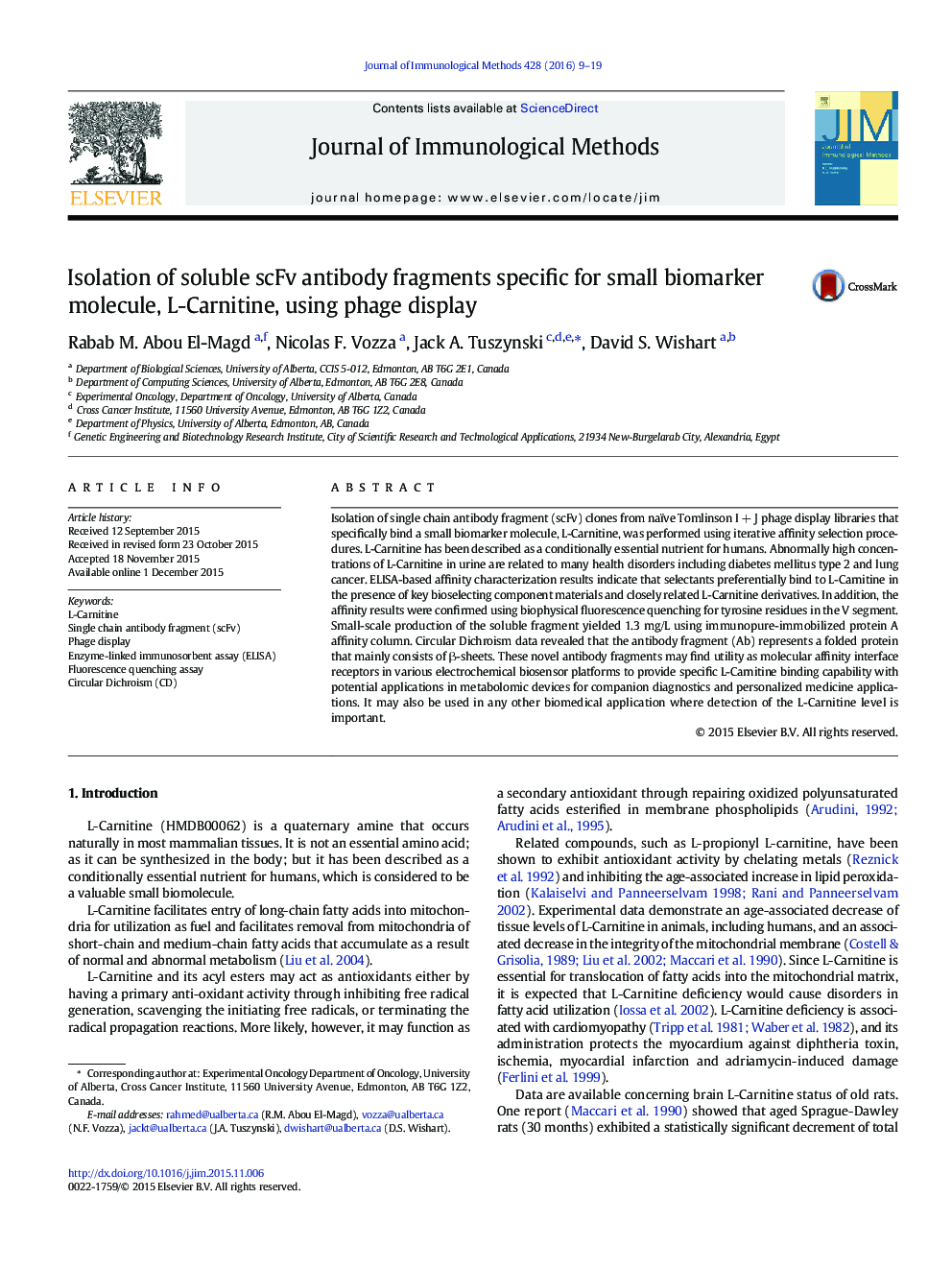| کد مقاله | کد نشریه | سال انتشار | مقاله انگلیسی | نسخه تمام متن |
|---|---|---|---|---|
| 2088032 | 1545681 | 2016 | 11 صفحه PDF | دانلود رایگان |

Isolation of single chain antibody fragment (scFv) clones from naïve Tomlinson I + J phage display libraries that specifically bind a small biomarker molecule, L-Carnitine, was performed using iterative affinity selection procedures. L-Carnitine has been described as a conditionally essential nutrient for humans. Abnormally high concentrations of L-Carnitine in urine are related to many health disorders including diabetes mellitus type 2 and lung cancer. ELISA-based affinity characterization results indicate that selectants preferentially bind to L-Carnitine in the presence of key bioselecting component materials and closely related L-Carnitine derivatives. In addition, the affinity results were confirmed using biophysical fluorescence quenching for tyrosine residues in the V segment. Small-scale production of the soluble fragment yielded 1.3 mg/L using immunopure-immobilized protein A affinity column. Circular Dichroism data revealed that the antibody fragment (Ab) represents a folded protein that mainly consists of β-sheets. These novel antibody fragments may find utility as molecular affinity interface receptors in various electrochemical biosensor platforms to provide specific L-Carnitine binding capability with potential applications in metabolomic devices for companion diagnostics and personalized medicine applications. It may also be used in any other biomedical application where detection of the L-Carnitine level is important.
Journal: Journal of Immunological Methods - Volume 428, January 2016, Pages 9–19